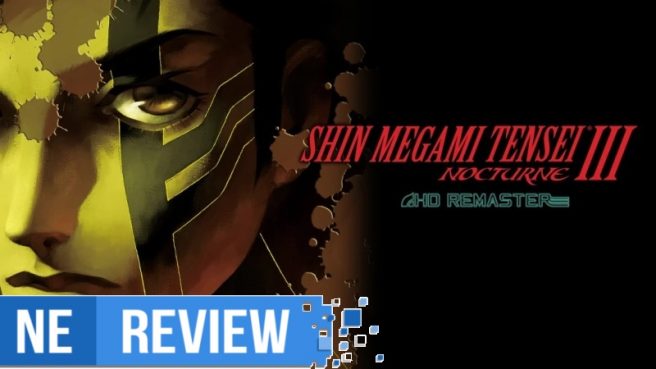[Review] Shin Megami Tensei III: Nocturne HD Remaster
System: Switch
Release date: May 25, 2021
Developer: Atlus
Publisher: Atlus
Shin Megami Tensei III: Nocturne HD Remaster is an exhausting game. I don’t just mean exhausting in that it has a long name that I’m already tired of typing out, but rather, exhausting as an experience overall. Its world is bleak, barren and void of any semblance of hope for its inhabitants. Its gameplay, consisting almost entirely of archaic turn-based combat, can be unforgiving and occasionally opaque. And while the game has been given a small facelift for this 2021 rerelease, it largely embraces its PlayStation 2 origins and does little to modernize itself today’s audiences. Depending on what type of player you are, this may be enough to turn you off from the game entirely, but those who enjoy patiently unpacking a cryptic, challenging experience will likely find themselves deeply absorbed in Shin Megami Tensei III.
I’m thrilled that this game exists on the Switch at all, because Shin Megami Tensei is one of those franchises that I’ve always wanted to dive into on a modern platform. The announcement of Shin Megami Tensei V a few years ago put the series on a lot of people’s radar for the first time, and while I have thoroughly enjoyed playing through the Persona series (which, you may not know, is actually a spin-off of Shin Megami Tensei) I’ve never touched a “proper” SMT game before now. That’s why I was so excited to finally have the opportunity to try out Shin Megami Tensei III: Nocturne HD Remaster for the first time.
The game certainly does its best to hook in new players with its premise. In Shin Megami Tensei III: Nocturne, you play as a high-school boy living in Tokyo – or at least you do for about half an hour, at which point a cult triggers a good old-fashioned demon apocalypse, abruptly erasing nearly all life on earth. The planet is transformed into a “vortex world”; Tokyo folds over onto itself a-la Inception, and the streets are transformed into a deserted wasteland filled with warring factions of demons that seek to rebuild the world in their image.
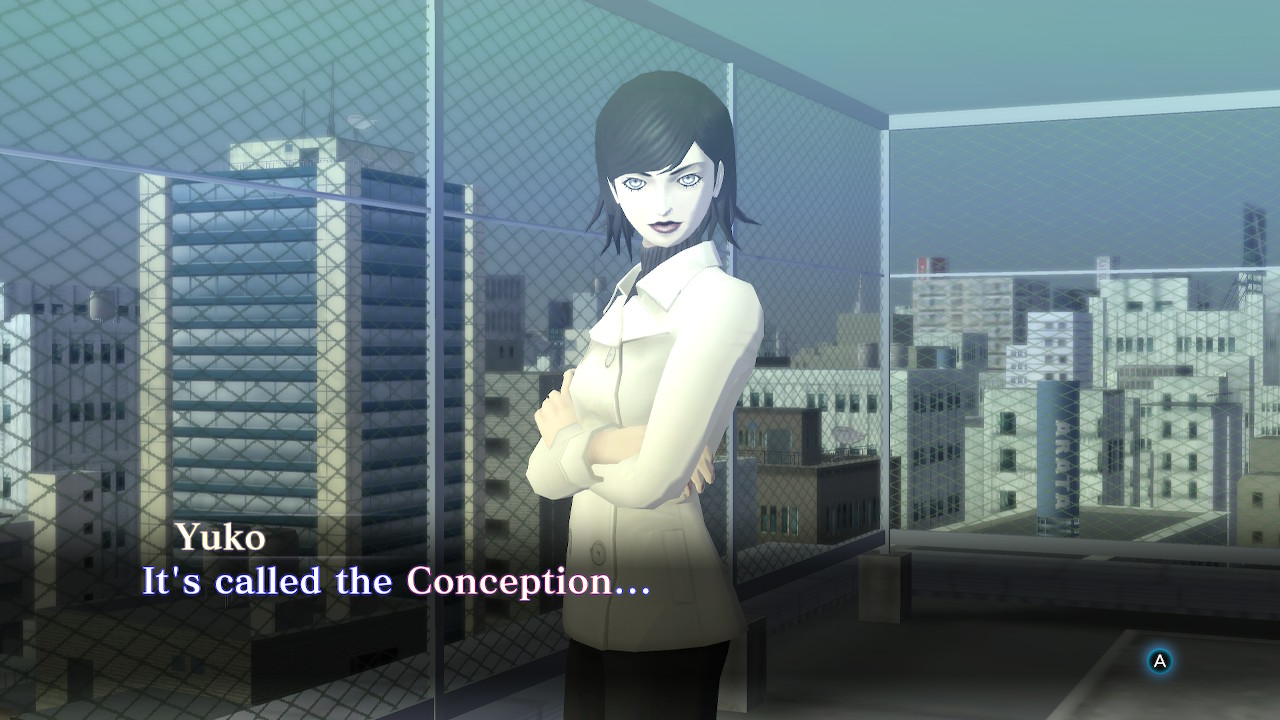
Your nameless protagonist, of course, manages to get caught in the middle of this whole situation. He and a few of his classmates are mysteriously summoned to a hospital in Tokyo by their teacher, and its from the roof of this deserted building that you witness the end of the world firsthand. It’s a dramatic scene that reeks of dread and despair, and I was surprised at how well this game released almost two decades ago was able to capture the horror of the apocalypse so effectively. It’s not done in a way that is particularly gruesome or graphic, but simply the way the scene is presented is a remarkable way to set the tone for the rest of the game.
Unfortunately, your high-school cast of characters – while spared form the apocalypse by virtue of being in the right place at the right time – don’t escape the situation unscathed. Your classmates, presumably experiencing some heavy trauma, go missing out in the world, and you, the player, are transformed into a half-demon/half-human hybrid called the Demi-fiend by a mysterious figure. You are given to ability to control and wield the power of captured demons and tasked with recreating the world in whatever image you see fit – although which world you end up creating will ultimately be up to you.
Now, I’ve been playing games for some twenty years at this point, but I’ve never explored this type of premise before, and it really hooked me in deep. A big part of that I credit to the music. The haunting grandeur of a church organ drives some of the darker story moments, which all collide perfectly with the religious symbolism that pervades the game’s script. The battle themes are driven by dark, weighty metal music and desperate, inaudible vocals that evoke the tortured spirits present around Tokyo’s world. It’s a triumph of a soundtrack. And herein also lies one of major problems with this port – the music is heavily, heavily compressed, to the point where entire instruments are all but lost in translation. This is how the soundtrack sounded in the original PS2 release, but it is a massive disappointment that Atlus didn’t take the time to implement higher-quality versions of the music. And while this didn’t diminish the impact the music had on my experience, it did negatively affect my opinions of the game as a whole.
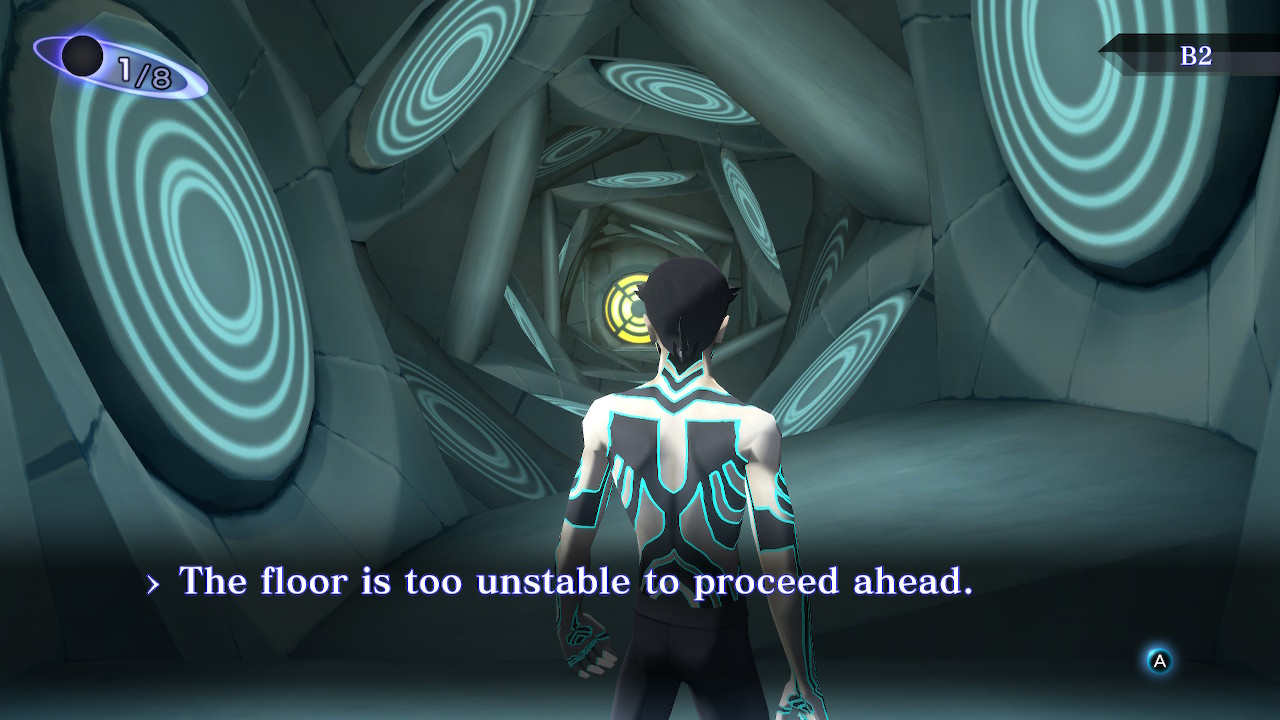
I feel similarly about the visual presentation of Shin Megami Tensei III: Nocturne HD Remaster. What’s here is functional, but more could have been done to modernize it. For this re-release, Atlus says it enhanced all of the character models and environments, and this means that the game as a whole looks much sharper and crisper than the original version. But everything still looks very polygonal and angular, especially character faces – there’s no hiding that this is ultimately just a remaster of a PS2 game. I am also mixed on the world itself, which remains relatively barren. Most of the game takes place in closed-off interior spaces that really have extraordinarily little in them, and frankly quickly become repetitive environments to explore. On one hand, this does fit with the overall premise of the game – it’s the apocalypse, so it’s not like I’m expecting a world filled with life and things to do – but a little more set dressing would have helped make the world more interesting to explore. If you think you’ll get tried of walking through mostly empty corridors, you might not enjoy this game.
But what do you actually do in Shin Megami Tensei III? Well, immediately after you witness the apocalypse, you set out into the world seeking to figure out where your classmates and teacher are, and what the hell is going on. You navigate to different parts of Tokyo via an overworld map presented from a top-down, 2.5D perspective. Once you arrive at your destination, be that the abandoned malls of Ginza or the underground sewers connecting the city, the perspective transitions to a more traditional third-person perspective. The overworld map is vast and open, but you spend relatively little time here – the 3D locales you explore are much tighter and more linear. And the main thing you do as you try and get from point A to point B is fight hordes upon hordes of demons.
I’m really not exaggerating when I say that a good 75% of this game takes place in turn-based battles, and almost all of those battles are random encounters. Enemies are invisible as you explore and there’s no avoiding entering combat. A sensor on screen will change color from green to red during exploration as your next fight approaches, so you do at least get a little warning before a battle starts… but if turn-based combat really isn’t your jam, this game may not be for you. (Alternatively, you can switch the game’s difficulty down to Merciful mode to drastically reduce the number of battles-in game, but that does come with some caveats – which I’ll get to in a bit.)
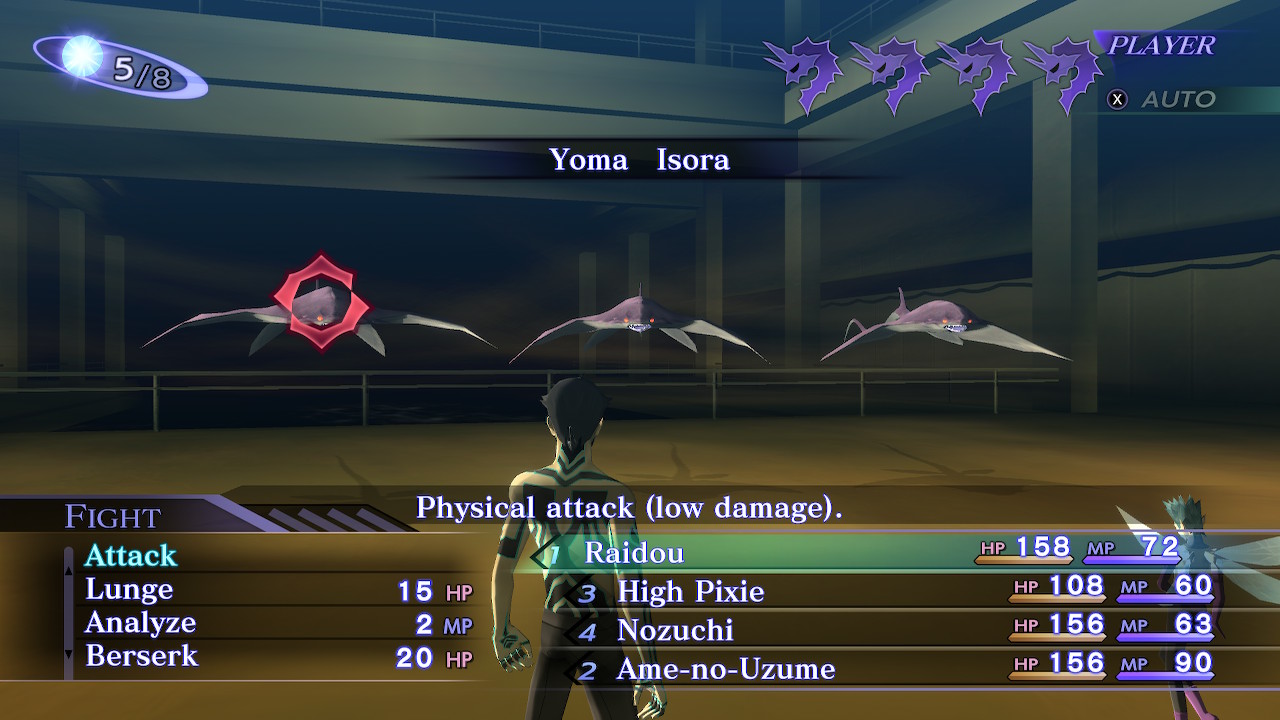
Once you enter combat, fighting demons plays out in fairly standard turn-based fashion. Your party consists of the Demi-fiend and up to three demons, all of which have different strengths and weaknesses – as do your enemies. By default, you have up to four turns in which you can use physical attacks on your enemies, cast magic element-based attacks (like fire or ice, for example), utilize healing spells and items, or direct special abilities that apply buffs or debuffs to your party or your enemies. The big twist here is what Atlus calls the “Press Turn” system, which can grant you more turns in battle for hitting an enemy’s weakness – or take away turns for making poor decisions in combat.
Enemies can also use this system against you to gain more or fewer turns, potentially taking away your advantage. For example, say you discover that a certain type of enemy is weak to fire, so you cast a fire spell on it – that would grant you an extra turn! But inversely, let’s say you have two demons in your party that are weak to ice attacks, and an enemy casts an ice spell on your whole party – in that case, not only would those demons take a lot of damage, but your enemy would gain two turns. Turns can also be lost if, say, an enemy you attack is resistant to that type of attack, or reflects it altogether. There’s a fair amount of depth to this system, and penalties for not understanding it can be harsh. If you enter a boss battle with a party that is weak to force attacks, and that’s your enemy’s main method of attacking, you will almost certainly fail. Going into battles with the right party is essential.
Fortunately, you can try and recruit new demons to your party by negotiating with them during combat. Once you’ve whittled down the number of enemies on-screen, you can approach any remaining demon to try and get them to join your ranks; not all of them are intelligent enough to communicate, and some just will not want to talk, but those that do will typically ask for money and items before surrendering to you. You can try and negotiate the price down, but annoy them too much and they’ll run off with whatever you gave them. There’s a decent amount of risk-and-reward here, but you’ll want to start recruiting demons as soon as you can. The game won’t really explain how important this mechanic is, but fail to utilize it and you’ll quickly start getting obliterated in battle.
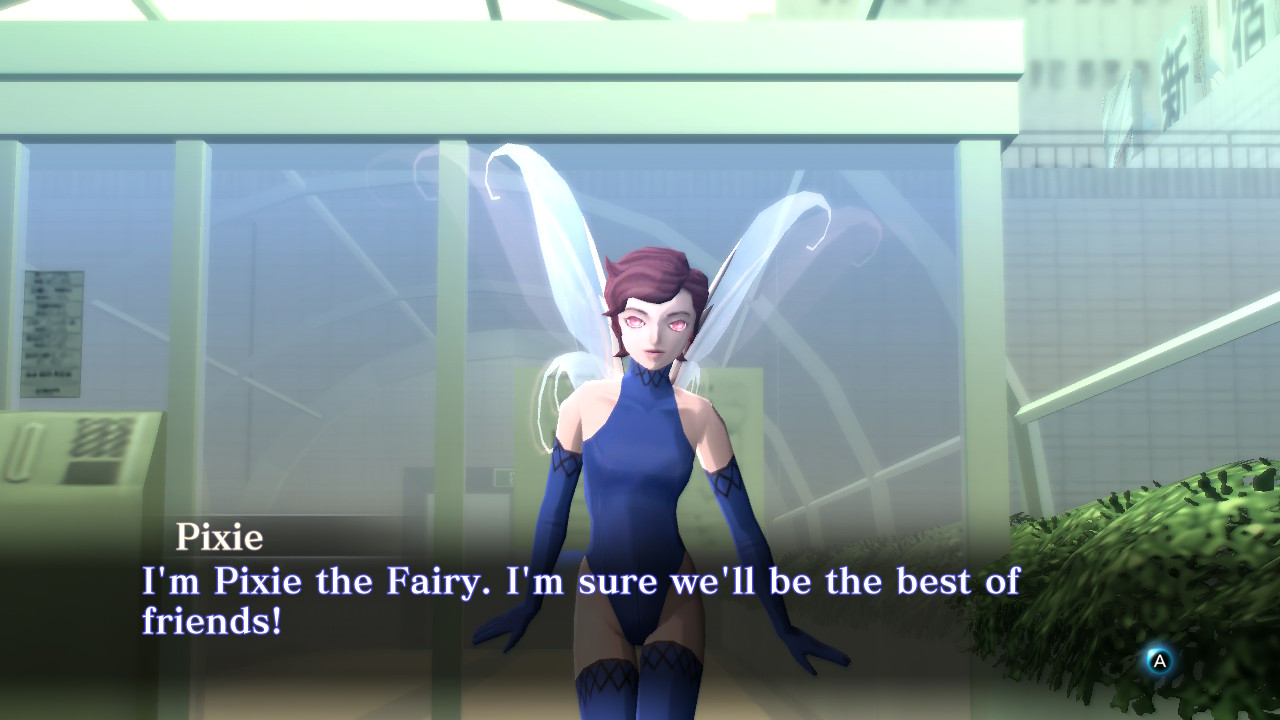
You’ll also need to fuse demons together to make them stronger over time. Fans of Persona will be familiar with how this system works – fusing transforms two demons into one and allows you to transfer a limited number of abilities to this new demon while also gaining some new ones. In the original Shin Megami Tensei III, you couldn’t really choose which skills your fused demon could inherit, which meant that you might end up fusing a demon that didn’t carry over the skills you depended on the most. Fortunately, in this re-release, you have much more control, meaning it’s much easier to build out your ideal cast of demons.
All of this contributes to being prepared for battle, but beyond building up your party of demons, you will also assign experience points to the Demi-fiend in areas like Strength, Vitality, Agility, or Luck. It’s a little tricky to gauge at a glance exactly what impact each of these categories has, though, so you may want to consider consulting a guide when figuring out how you want to build out your character. On top of all that, you can also adjust your Demi-fiend’s strengths and weaknesses by changing what type of Magatama he has equipped. (In Shin Megami Tesnei III, Magatama are what give demons their power.) These can be bought from certain vendors, but some will also be given to you as you progress through the game and having the right one equipped can mean life or death when facing a tough boss.
There’s a reason why I’m touching on the combat so much. Shin Megami Tensei III: Nocturne HD Remaster is a very challenging game, and borders on being unfair at times. Failure to understand and effectively execute all of these mechanics will result in swift and unceremonious deaths that send you back to the last save point. And you don’t retain any of your progress when this happens, either, meaning any levels you have gained, any demons you have recruited since your last save – that will all need to be reobtained. Save points are few and far between, too, so death can mean losing half an hour of progress or more if you’re not careful.
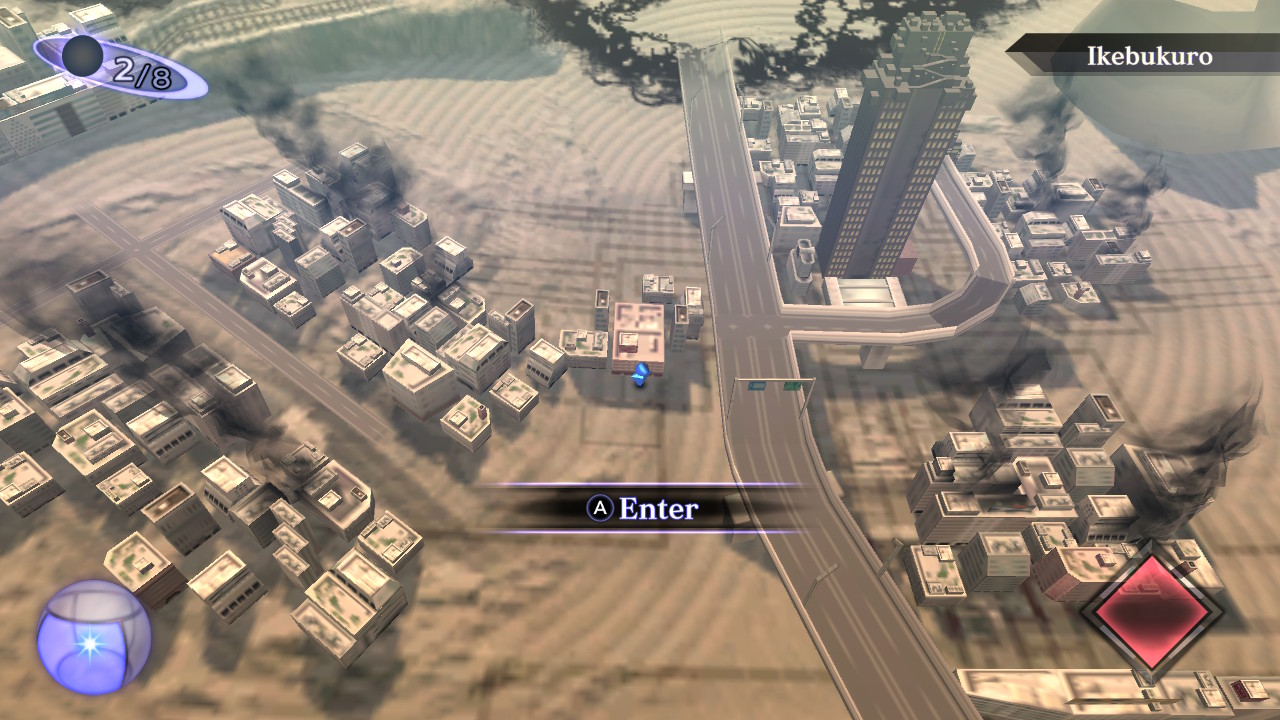
I certainly don’t mind a challenging experience, and for the first five or six hours, playing on normal difficulty, the challenge felt manageable. But the game’s first truly challenging boss, Matador, is a brutal fight, and the game just gets more challenging from there. Part of this difficulty is because, early on, much of those mechanics I just explained really aren’t explained in substantial depth. It really isn’t like a Persona game in which you can typically figure out the mechanics as you go either, and coast through on partial understanding – there’s a lot of trial and error involved, and I think almost everyone will be unprepared when they arrive at Matador. I had to look online to figure out why I was failing so much, and after six or seven times of me being wiped out, I went back out into the overworld to grind some levels (which I always hate doing) and recruit some more demons (which can also become tedious). Even after doing so, I was still getting crushed. When you combine this generally high difficulty with the opaqueness of the game, many players will be tempted to switch to Merciful difficulty.
Here’s the caveat with Merciful difficulty: the game really doesn’t feel balanced for it, at least to me. Yes, it makes battles substantially easier, and reduces the amount of strategy and preparation required. It also reduces the number of battles you’re in by nearly half, if I had to estimate. But as far as I could tell, this reduced encounter rate does not compensate by proportionally increasing the amount of EXP you gain. My fear, therefore, is that playing exclusively on Merciful will eventually result in being underleveled should you decide to bump back up to Normal difficulty down the road, and even if you don’t (you can, I should note, adjust difficulty at any time.)
Thus, here is what I would recommend for new players seeking a balanced experience: play most of the game on Normal difficulty, but switch to Merciful just before a boss battle, and then go back to Normal difficulty afterwards. It’s a bit of a pain to do so, but to me feels like the ideal solution: you won’t get obliterated during boss battles, but you still have opportunities to strategize and learn the games’ mechanics as you explore. This help combat remain satisfying and mitigates a lot of the brutal difficulty spikes, with the added benefit of eliminating the risk of ending up underleveled down the road.
Or, if you’re a masochist, just play the game on Hard difficulty. If you decide to do this, my hopes and prayers rest with you.
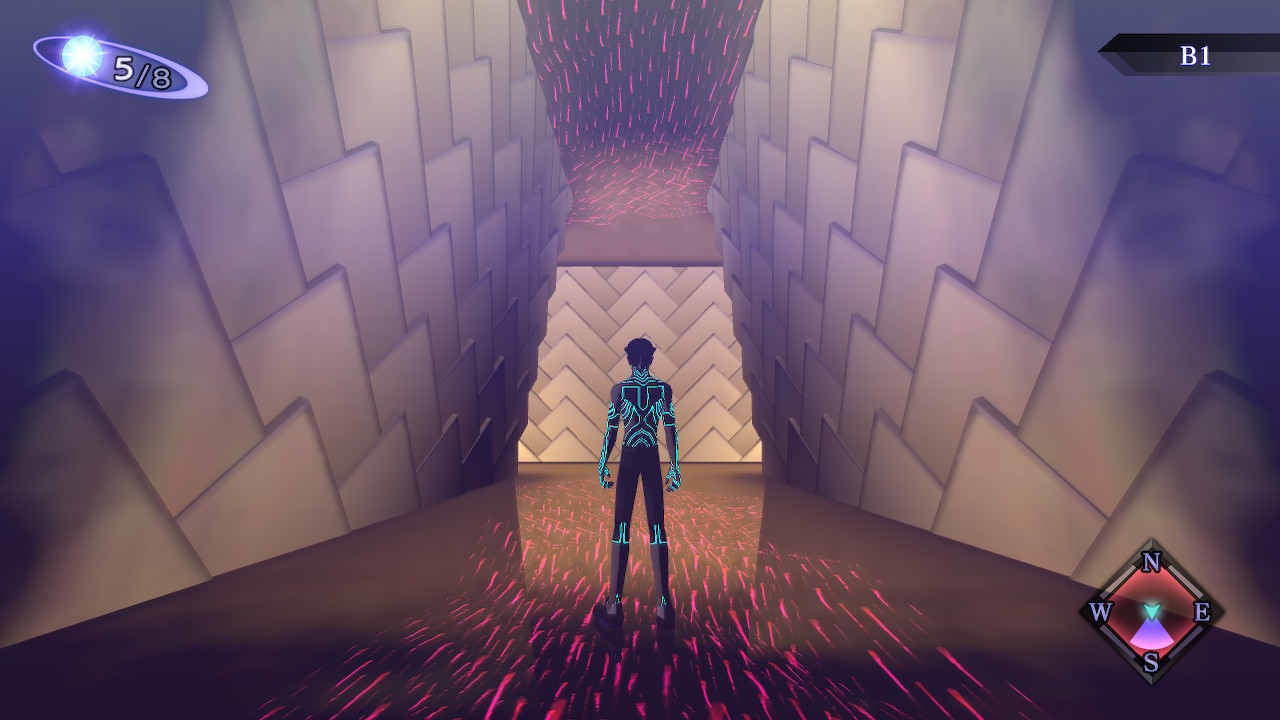
Ultimately, I really wish combat wasn’t such a huge chunk of Shin Megami Tensei III’s gameplay loop, because it really slows the pace of the story to a crawl. Which is a shame, because the story is excellent and really ramps up after 15 hours or so, when you begin choosing which factions to align with. For me, story is the main reason why I play games, so I really wanted to push through Shin Megami Tensei III’s repetition to see the end of the game. But ultimately, this is a LONG experience, probably in the ballpark of 60-70 hours for most players, and so I really struggle with recommending this game to story-focused players because of this game’s pacing. If you don’t love the combat, you will probably struggle to reach the end.
I suppose I should mention that Atlus didn’t bother to update any of the game’s story cinematics either. We’re talking the same 4:3 cutscenes that were in the PS2 release, complete with black bars on the side of the screen, and not upgraded in any way. Which is frustrating considering how few of them there are throughout the game’s story – for the $50 Atlus is charging, this really should have been addressed.
There are a handful of benefits exclusive to this HD remaster, though. While save-points, as I mentioned, are sparse in-game, you can exit and save your progress at any point by creating a Suspend Point. It’s not a separate save file – you can only load it when reentering the game, at which point it is erased, so this function mostly acts as a way to close the game without losing progress. Still, it’s a nice feature to have if you like to bounce between multiple titles at a time.

The game also has voice acting now, in either English or Japanese, as well as plenty of subtitle options. I thought the English voice acting was excellent – mature enough that it fits the game’s tone, but also infused with that signature Atlus personality that makes the Persona titles so much fun. And carried over from the original game is the ability to play as Dante from the Devil May Cry series – if you buy the “Maniax” DLC pack, that is, or the Digital Deluxe version of the game. That pack also includes some extra content as well in the form of dungeons to explore. I didn’t spend much time with this content, but I wish it were included in the base game considering the relatively small list of other additions.
Finally, a note about technical performance on Switch. The original Japanese version of Shin Megami Tensei III: Nocturne HD Remaster released last year with several major bugs, which Atlus says have been addressed in the western version of the game. However, in addition to the frame rate dropping during certain battles and while exploring certain environments – which I find a little ridiculous considering this was a PS2 game – there’s also a strange bug that occasionally makes the screen flicker to black after exiting a conversation. It usually only happens for a split-second, but there was one instance in which the screen went black for around 5-10 seconds, causing me to worry that I had lost progress. Fortunately, I didn’t, but it’s definitely an issue Atlus needs to address.
The Verdict
I recommend Shin Megami Tensei III: Nocturne HD Remaster as an overall experience, but it’s not going to be for everyone, and while that can be said about many games, I suppose, this title in particular deserves that label more than most. The world, narrative premise, and overall atmosphere are all undeniably well-executed, and the music and voice acting are phenomenal. The combat is simple at face value but offers up a lot of depth and complexity for those who genuinely love turn-based battles. But this game hasn’t aged as well as many may have hoped, and while Atlus’ improvements do help modernize the experience somewhat, ultimately, I feel like much more could have been done to warrant the price tag. The game is also long, immensely challenging, and its repetitive combat can feel like a slog depending on your tastes. Ultimately, this one just barely earns a recommendation, but proceed with caution if you are new to the franchise.
Review copy provided by the publisher for the purposes of this review.
